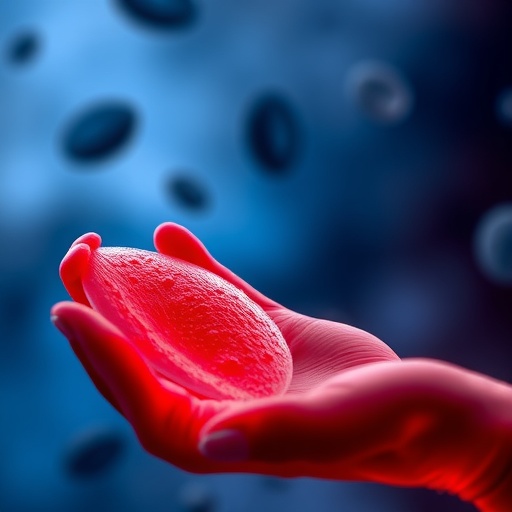In a groundbreaking study published by Yang et al., researchers have discovered a compelling link between aerobic exercise and ferroptosis, a form of regulated cell death that has emerged as a significant mechanism in various forms of cardiac injury, including ischemia/reperfusion (I/R) injury. Their research elucidates how the insulin-like growth factor binding protein 2 (IGFBP2) serves as a critical mediator in this protective process, providing exciting insights for cardiology and exercise physiology.
Ferroptosis is characterized by the accumulation of lipid peroxides to lethal levels, leading to cell death. Recent studies have highlighted its pivotal role in cardiac I/R injury, a condition that occurs when blood supply to the heart is disrupted and subsequently restored. The sudden restoration of blood flow can exacerbate cellular damage due to oxidative stress. The findings from Yang et al. suggest that aerobic exercise can mitigate the detrimental effects of I/R injury through pathways involving IGFBP2, making it a potential therapeutic target.
The researchers designed their study with meticulous attention to detail, using both animal models and cell cultures to explore the effects of aerobic exercise on myocardial health. The experimental framework highlighted the physiological changes that occur in the heart during aerobic training, specifically focusing on how this form of exercise influences ferroptosis. Through rigorous analysis, the team established that IGFBP2 levels increase significantly in response to regular aerobic exercise.
One of the study’s most striking revelations was the role of IGFBP2 in promoting cell survival during oxidative stress. Under conditions that typically induce ferroptosis, elevated levels of IGFBP2 were found to inhibit the cascade of events leading to cell death, suggesting a protective mechanism unique to aerobic exercise. What makes this finding particularly compelling is the potential for IGFBP2 levels to serve as biomarkers, providing insights into an individual’s exercise capacity and resilience against cardiac injuries.
This research carries broad implications for how we understand the preventive measures against heart disease. By integrating aerobic exercise into daily routines, individuals may enhance their cardiac defenses effectively. The clinical relevance is heightened by addressing the obesity epidemic, where sedentary lifestyles contribute to cardiac complications. Increased awareness of IGFBP2’s role could open avenues for exercising as a prescription for heart health.
Additionally, the identification of IGFBP2 introduces a new player in the complex interplay between exercise, metabolism, and cell survival. The molecular mechanisms remain a rich field for exploration, with possibilities for developing drugs that mimic aerobic exercise’s protective effects by targeting IGFBP2 pathways. These pharmacological interventions could prove lifesaving for patients unable to engage in physical activity due to various limitations.
One potential avenue for future research lies in the interaction of IGFBP2 with other signaling pathways involved in cardiac protection. Examining how IGFBP2 collaborates with metabolic and growth factor signaling can help uncover additional therapeutic strategies. This multifaceted approach could produce comprehensive strategies for managing heart health, particularly in populations at high risk for I/R injury.
The findings from Yang et al. underscore the importance of lifestyle modifications in combating physiological stressors. Integrating aerobic exercise and fostering an active lifestyle are not merely options but rather essential components of comprehensive health strategies. The heart, with its intricate balance of signaling pathways and cellular mechanisms, can derive substantial benefits from consistent aerobic activity.
Moreover, the research highlights an emerging trend in cardiology that emphasizes prevention through lifestyle changes rather than only intervention following the onset of disease. By understanding and harnessing the power of exercise, clinicians can develop more holistic cardiac care models that prioritize the quality of life alongside the extended life span.
As communities grow increasingly health-conscious, the necessity for collaboration among fitness professionals, healthcare providers, and patients has never been greater. Increasing awareness of IGFBP2’s role in cardiac health may energize initiatives advocating for exercise as a cornerstone of cardiovascular wellness. Such campaigns can encourage more comprehensive public health policies aimed at reducing the burden of heart disease.
In conclusion, Yang et al.’s research offers a refreshing perspective on the intersection of exercise science and cardiology. The revelation that IGFBP2 mediates the protective effects of aerobic exercise against ferroptosis provides a compounding argument for the integration of physical activity into preventive care. As science continues to evolve, the importance of these findings remains steadfast—encouraging a future where exercise becomes an essential prescription for heart health.
The implications of this research for fitness, clinical practice, and public health are profound. It sets a precedent for future studies investigating the roles of exercise-induced adaptations in various cellular pathways. As science pushes the envelope in understanding how our bodies respond to physical exertion, the research exemplified by Yang et al. stands as a vital contribution to our evolving narrative about health and longevity.
As we venture into exploring ways to mitigate the impact of heart disease, knowledge surrounding IGFBP2 can empower individuals and communities alike. By fostering environments that support physical activity, we cultivate not only healthier hearts but also more resilient, well-rounded societies that prioritize fitness as a key component of a vibrant life.
Subject of Research: Aerobic exercise, IGFBP2, ferroptosis, cardiac ischemia/reperfusion injury
Article Title: IGFBP2 plays a key role in aerobic exercise-mediated inhibition of ferroptosis in cardiac ischemia/reperfusion (I/R) injury
Article References:
Yang, C., Meng, X., Xia, C. et al. IGFBP2 plays a key role in aerobic exercise-mediated inhibition of ferroptosis in cardiac ischemia/reperfusion (I/R) injury. J Transl Med 23, 1080 (2025). https://doi.org/10.1186/s12967-025-06982-6
Image Credits: AI Generated
DOI: 10.1186/s12967-025-06982-6
Keywords: IGFBP2, aerobic exercise, ferroptosis, cardiac injury, ischemia/reperfusion, heart health, metabolism
Tags: aerobic exercise benefits for heart healthanimal models in cardiac studiescardiovascular research advancementsexercise-induced cardioprotectionferroptosis and ischemia/reperfusion injuryIGFBP2 role in cardiac protectioninsulin-like growth factor binding proteinslipid peroxidation and cell deathmechanisms of regulated cell deathmyocardial health and exercise physiologyoxidative stress in cardiac injurytherapeutic targets for cardiac therapies





